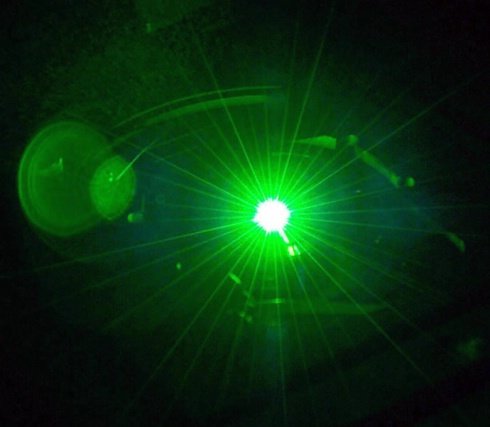Scientists from DTU have shown that a Fano laser, a new type of microscopic laser, has fundamental advantages compared to other types of lasers. The discovery can be important for many future applications, such as integrated photonics, interfacing of electronics and photonics, and optical sensors.
An increasing fraction of the global energy consumption is used for information technology, and photonics operating at very high data rates with ultra-low energy per bit has been identified as a key technology to enable sustainable growth of capacity demands.
However, existing laser designs cannot just be scaled down to reach the goals for next-generation integrated devices, and fundamental discoveries in the field of nanophotonics are therefore needed.
Supported by a Villum Center of Excellence, NATEC, a newly established DNRF Center of Excellence, NanoPhoton, and an ERC Advanced Grant, scientists from DTU are exploring the physics and applications of a new class of photonic devices using a phenomenon known as Fano interference. This physical effect offers an opportunity for realizing ultrafast and low-noise nanolasers (called Fano lasers), optical transistors, and quantum devices working at the level of a single photon.
Now, the DTU scientists have shown that the coherence of a Fano laser can be significantly improved compared to existing microscopic lasers. The result has been published in Nature Photonics.
“The coherence of a laser is a measure of the purity of the color of the light generated by the laser. A higher coherence is essential to numerous applications, such as on-chip communications, programmable photonic integrated circuits, sensing, quantum technology, and neuromorphic computing. For example, coherent optical communication systems transmit and detect information using the phase of light pulses, leading to a tremendous information capacity” says Jesper Mørk, Professor at DTU Fotonik and Center Leader of NATEC and NanoPhoton.
Jesper Mørk further explains: that “the Fano laser, with a size of a few microns (one micron is one-thousandth of a millimetre), operates in an unusual optical state, a so-called bound-state-in the-continuum, induced by the Fano resonance. The existence of such a state was first identified by some of the early pioneers of quantum mechanics, but evaded experimental observation for many years. In the paper, we show that the characteristics of such a bound-state-in-the-continuum can be harnessed to improve the coherence of the laser.”
“The observation is somewhat surprising,” adds lead author and senior researcher at DTU Fotonik, Yi Yu, “since a bound-state-in-the-continuum is much less robust than the states commonly used in lasers. We show in our paper, experimentally as well as theoretically, that the peculiarities of this new state can be used to advantage.”
Yi Yu continues that “to achieve the goal we have developed, in collaboration with Professor Kresten Yvind’s group at DTU Fotonik, an advanced nanotechnology platform, called Buried Heterostructure Technology. This technology allows realizing small, nanometer-sized regions of active material, where the light generation takes place, while the remaining laser structure is passive. It is the physics of Fano resonance combined with this technology that eventually enables the suppression of quantum noise, leading to the highest measured coherence for microscopic lasers.”
This new finding may lead to the use of Fano lasers in integrated electronic-photonic circuits, in particular in new generations of high-speed computers. In today’s computers, electrical signals are used for logic operations as well as for transmitting data between different parts of the computer. However, due to ohmic losses, a lot of energy is wasted in the transmission. The primary role of the Fano laser will be to convert the electrical data to light signals, which then are transmitted within the computer almost without loss – just as it is done in optical fibres on the internet today. The long-term perspective is to get much faster computer chips with minimal energy consumption.
An optical coating like no other
More information:
Yi Yu et al, Ultra-coherent Fano laser based on a bound state in the continuum, Nature Photonics (2021). DOI: 10.1038/s41566-021-00860-5
Provided by
Technical University of Denmark
Citation:
Novel physics gives rise to the highest coherence for microscopic lasers (2021, August 27)
retrieved 29 August 2021
from https://phys.org/news/2021-08-physics-highest-coherence-microscopic-lasers.html
This document is subject to copyright. Apart from any fair dealing for the purpose of private study or research, no
part may be reproduced without the written permission. The content is provided for information purposes only.



